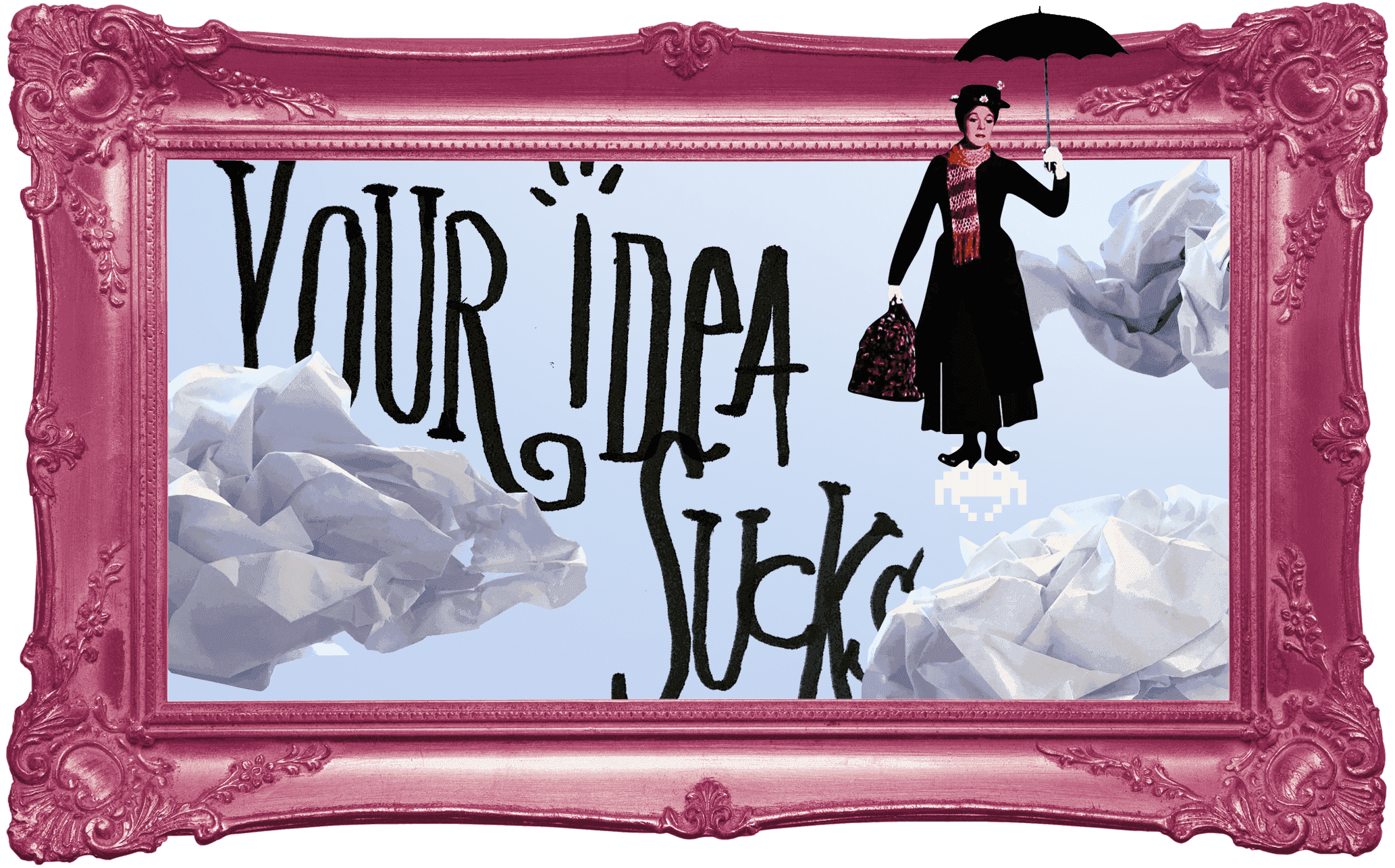Holding a creative role in an ad agency is a lot like riding a roller coaster. Some days are thrilling, others can be stomach turning. The pressure to come up with good ideas is near-constant, and defending them to clients, peers and accounts folks takes its toll on the soul.
I’ve come up with lots of bad ideas in my time. Still do. Rarely a day passes that I don’t concoct a cringe-worthy headline or pun-riddled paragraph. Thankfully, experience (read, public humiliation), has helped me develop a sense of what’s workable and what’s not. But looking back, I can confidently say that the bad ideas have always taught me more than the good ones.
Of course, much of what I’ve learned has been due to receiving constructive feedback. And while every creative director I’ve ever worked with has had their own way of doing things, here are a few things I try to keep in mind.
Give Direction, Not Correction
It’s easy to say “do it like this.” But while dictating the creative answer helps speed up the revision process—and there are times when the work just needs to get done—it also ruins the opportunity to learn from mistakes. What’s worse, giving a writer or designer the answer instead of leading them to find it themselves diminishes their ownership in the work.
Do this on the reg, and after a while you’ll end up with apathetic writers and designers who get no personal satisfaction from writing or designing. Making an effort to give thoughtful direction that inspires a new solution, angle or approach builds confidence.
Require Rationale
It’s easier to evaluate ideas when you know how they came about. Asking creative staff to provide rationale, even if it’s just a couple of sentences, helps everyone understand the underlying thinking and strategy. It also teaches greener creatives how to defend work, so they’ll be better prepared to answer questions like “Why did you choose this typeface?” or, “Why is this church bulletin filled with swearing?”
On that note, one of my pet peeves is when people equate creative rationale with “bullshitting.” I’ve heard it so many times—from creatives, no less—and it always surprises me. To call rationale “bullshitting” diminishes the value of the thinking that went into the work. Solid rationale shines light on what makes an idea great and is critical to selling the concept. Watching a young writer or designer deliver a buttoned-up rationale under scrutiny from a client is a thing of beauty, not BS.
Give Some Sugar with the Medicine
Yes, we’re all professionals and shouldn’t need to be coddled. But when pointing out shortcomings in someone’s work, I try to call out a strength or two as well. It’s not an everyone-gets-a-trophy philosophy, just good bedside manner. Confident creatives do better work, and when an idea falls flat, it’s easier for them to go back to the drawing board without wearing a dunce cap.
Creative-minded people are often their own harshest critics anyway, so any negative feedback they receive will be amplified in their minds. Yes, developing thick skin is part of the gig, and there is a such thing as being too sensitive, but when pointing out flaws, try to point out something good, too.
Let Them Drive the Bus
Empowering creative staff to steer ideation and execute their vision helps grow thinking and leadership skills. Giving up control can be nerve racking, but it can also be fun to just let go and see what happens. When they experience the adulation of winning client sign-off on an idea they came up with, their confidence grows—and that’s good for the work.
Great creatives are passionate. They’re intimately attached to their work, so it’s understandable that giving and getting feedback can get uncomfortable. The challenge is learning how to rain on the parade without putting out the fire.

